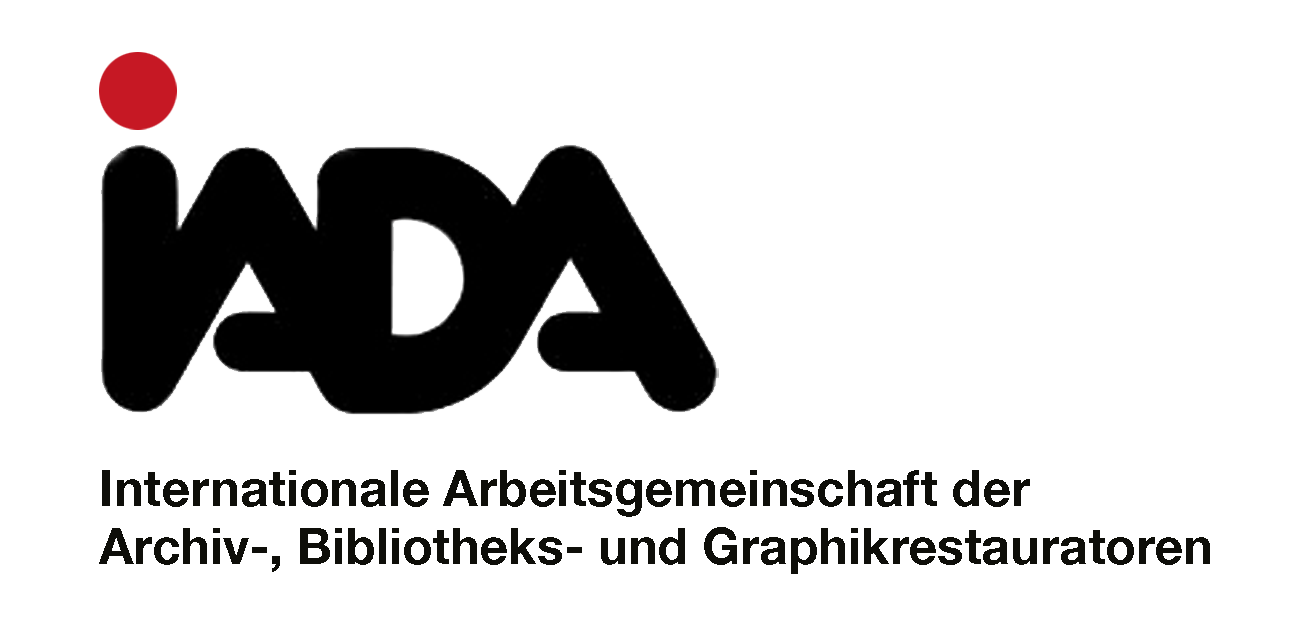Material
Every box offers a certain amount of protection and keeps the objects safe from mechanical damage.
A box protects against dust and light, and if necessary also keeps splash water out. For simple packaging that is only used for a short time, for example for transport purposes, this is undoubtedly sufficient.
Higher demands, however, must be placed on an archival standard box. The objects it is supposed to house are made of paper and they are intended to be stored for a long time.
Whether an archive box will help or even harm depends crucially on the material used. When the phenomenon of acid migration became known, the manufacturers and users of archival cardboard boxes had to rethink: cardboard boxes containing acid (and up to that time all archival cardboard boxes made of grey cardboard on the market without exception were acid-containing) cause damage by the acid migrating from the material into the inserted papers. This meant that even papers that did not contain any acid-forming components themselves and were therefore not actually at risk could become acidic.
This initially led to the requirement that archival cardboard should be acid-free. Soon the quality was further improved by introducing an alkaline reserve. It can neutralise acidic components that are, for example, already contained in the archive material or that come from the environment.
The materials used must not only be acid-free, but they must also not contain any components in themselves that could lead to acid formation. Paper materials that meet these requirements can be described as ageing-resistant. In order to achieve this high quality standard, not only may no wood-containing material be used in the manufacture of the papers (as is already the case in the manufacture of acid-free paper) but it is also forbidden to use recycled paper because its exact composition is unknown and it must always be assumed that wood-containing and acidic material is among them.
Ageing-resistant papers are defined under DIN ISO 9706. They are the basis for the production of corrugated board and cardboard with the corresponding properties. For the assessment of solid board, these criteria are used analogously – as far as possible – even though the standard does not apply to paperboard.
As a further development DIN ISO 16245 was defined to distinguish between paper materials for boxes and for folders and divides the materials for boxes into types A and B. Requirements for ageing-resistant papers are formulated as type A. In the same standard, paper materials of lower quality are defined as type B, which may nevertheless be used for certain archiving purposes.
Ageing-resistant paper materials must comply with DIN ISO 16245 A, which goes beyond the requirements of DIN ISO 9706, such as specifications on bleeding, the prohibition of optical brighteners and a strictly defined Cobb value.
Schempp Bestandserhaltung GmbH uses only ageing-resistant paper materials for the production of protective packaging for cultural property.
General material specifications:
Corrugated board
- E flute 1.6 mm, B flute 3.0 mm, EB flute 4.5 mm
- white, outside white, light grey or blue-grey
- glued wet-strength
- free of optical brighteners
- pH-value between 8.5 and 9.0
- Kappa number between 1 and 2
- alkali reserve of calcium carbonate > 4%
- neutrally glued
Corrugated board custom made
- Outside laminated with Durabel or Efalin, various colours possible
Solid board (only for the production of shelves)
- 1,4 mm
- pure cellulose
- blue-grey
- pH-value between 7.5 and 10
- Kappa number between 1 and < 5
- Alkali reserve of calcium carbonate > 2 %
Archival board
- 240 g/m², 330 g/m², 450 g/m²
- light grey, smooth surface
- 100% bleached pulp, acid-free and lignin-free
- pH value 8.0 to 9.0
- Kappa number between 1 and 2
- Alkali reserve from calcium carbonate > 4%
- neutrally sized
Archival board
- 300 g/m²
- blue-grey
- pH value 8.0 to 9.0
- Kappa number between 1 and 2
- alkali reserve of calcium carbonate > 4%
- neutrally sized
Archival board
- 535 g/m² (0.65 mm) and 845 g/m² (1.0 mm)
- blue-grey/white
- pH value 7.5 to 8.0
- Kappa number between 2 and 4
- alkali reserve of calcium carbonate approx. 3 %
- neutrally sized
Archival paper
- 80 g/m², 100 g/m², 120 g/m², 150 g/m², 170 g/m² or 190 g/m²
- white
- 100% bleached pulp, acid-free and lignin-free
- pH-value approx. 9.4
- Kappa number 4
- alkali reserve of calcium carbonate 5.7
- neutrally sized
dyed archival paper
- 120 g/m²
- blue-grey or light grey
- 100 % bleached pulp, acid-free and lignin-free
- pH value 8.0 to 9.0
- Kappa number between 1 and 2
- alkali reserve from calcium carbonate > 4%
- neutrally sized
Flat goods
We also provide the ageing-resistant paper materials we process as flat goods (raw sheets) or as blanks according to customer specifications.
- Archival paper white 80 g/m² (DIN A4 and DIN A3)
- Archival paper white 80 g/m², 100 g/m², 120 g/m², 150 g/m² and 170 g/m² (70 × 100 cm)
- Archival paper blue-grey or light grey 120 g/m² (100 × 173 cm)
- Photo archive paper and cardboard unbuffered, natural, 90 g/m², 120 g/m² and 230 g/m² (102 × 152 cm)
- Tissue paper buffered and unbuffered, 18 g/m² (70 × 100 cm)
- Archival board light grey 240 g/m², 330 g/m² and 450 g/m² (90 × 172 cm, 120 x 172 cm)
- Corrugated board light grey/white or blue-grey/white, E-flute 1.6 mm or B-flute 3.0 mm (87 × 125 cm, 120 × 172 cm and 160 x 250 cm) and EB-flute 4.5 mm light grey/white (87 × 125 cm, 165 × 250 cm)


